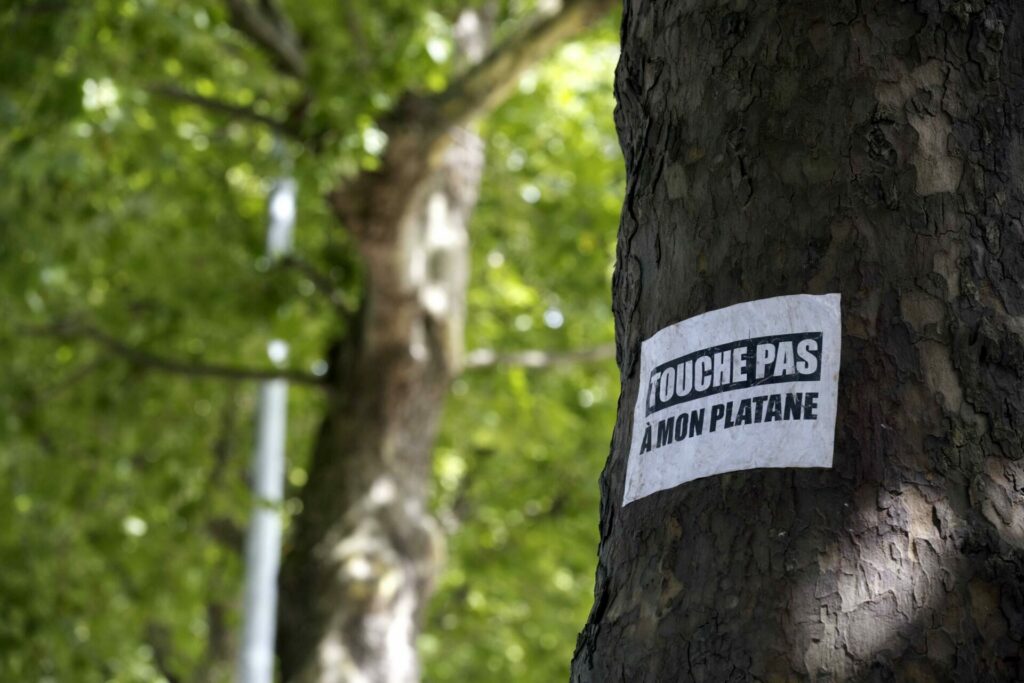More than 1 million people in Belgium lack green spaces in their neighbourhoods. In Brussels, the wealth divide correlates strongly to access to natural areas, with the poorest suffering an acute shortage of trees and parks.
With its high population density, people living both in Belgian cities and villages have a shortage of green spaces and trees, an analysis by Greenpeace has highlighted. A map published by the NGO shows the accessibility of urban nature, with a "green score" based on the 3-30-300 rule, according to which people should be able to see three trees from their house, there should be 30% leaf cover, and a public green area of at least 1 hectare (0.5 hectares in urbanised areas) should be within 300 metres.
"Many Belgians accept it as 'normal' to be surrounded by concrete with little greenery. But if we apply the 3-30-300 rule, we see that the situation is very bad in Belgium," Biodiversity Campaign Leader at Greenpeace Belgium, Ruth-Marie Henckes, told The Brussels Times.
"The lack of green is especially worrying for people's health," she added. A study by KU Leuven for example showed that people living near large, old trees take less medication for cardiovascular diseases and have less stress. "There are more and more studies confirming that people with views of trees and a park nearby are much healthier and happier."
Brussels: a leader in inequality
In 101 Belgian cities and towns, not a single property met the 3-30-300 rule. In almost three-quarters of the most-populated 100 cities and municipalities, less than one in 10 buildings complies with the rule. Only in 18 Belgian municipalities do more than half of buildings have sufficient green space.
But whilst the situation is a national concern, the data highlighted that municipalities with lower-income residents score especially poorly. Nowhere is this truer than in the Brussels-Capital Region. "The inequality is most pronounced in Brussels," said Henckes. Rich municipalities have sufficient green space while poorer municipalities have to make do with significantly less.
"Some of the best scores in the country are in Brussels. For example, Watermael-Boitsfort, Uccle and Woluwe-Saint-Pierre, the most prosperous municipalities, score very well. But some of Belgium's worst scores are also found here, in Saint-Gilles, Saint-Josse-ten-Node and Etterbeek."
On the left of the graph are the worst-performing places in Brussels. The data for Saint-Gilles shows that 59% of properties in the municipality have a view on at least three trees, no properties have at least 30% leaf cover and 74.2% of homes are located at a maximum of 300 metres away from a significant area of accessible nature. For Watermael-Boisfort, the figures are 95.2%, 80.6% and 88.9%, respectively.
Brussels struggles especially to achieve 30% leaf cover, which measures foliage in a neighbourhood. Municipalities that are especially concrete-heavy have low scores.
Even within municipal borders, large differences are apparent: not a single property in Anderlecht's low-income Birmingham neighbourhood meets the 30-30-300 rule but almost half of all buildings in the affluent neighbourhood around Park Scherdemaal do. The gap in median annual income between the two districts is over €10,000.
A political issue
The health benefits of a green living environment are also unevenly distributed. "Due to the lack of greenery, poor neighbourhoods will be hotter during heat waves and those same people have to move further to find coolness. This injustice urgently needs to be addressed."
Ahead of the 13 October local elections, Greenpeace calls on local politicians to address the shortage and unequal distribution of nature in urban areas. It recommends stricter monitoring to protect trees during construction works and improved publicly available data to research the issue.
Green public space became politically charged during the past administrative period of the Brussels Regional Government. "The issue ofsafeguarding nature was polarised in the sense that politicians argued either people should be in favour of social housing and a solution to the housing crisis, or fighting for nature, causing tension."

"Hands off my plane tree": a citizens' action against felling on Avenue Du Port in Brussels. Credit: Belga
The NGO stressed that it shouldn't be a question of one or the other. "It is inherently an issue of social justice: people in the most precarious situations also have the least access to nature. You can't solve that by opting for green space or social housing. You have to work towards ensuring both."
These political considerations could explain why safeguarding nature is not so prominent in local election lists' programmes. "That in itself is quite striking, because in a lot of other municipalities, it is the opposite, regardless of party affiliations," Henckes said.
Greenpeace hopes that by informing residents of their homes' "green scores", they will realise the importance of demanding improvement, especially on a local level, where decisions about environmental permits are made, the implementation of the regional planning policy is carried out and decisions on the felling of trees are made.

